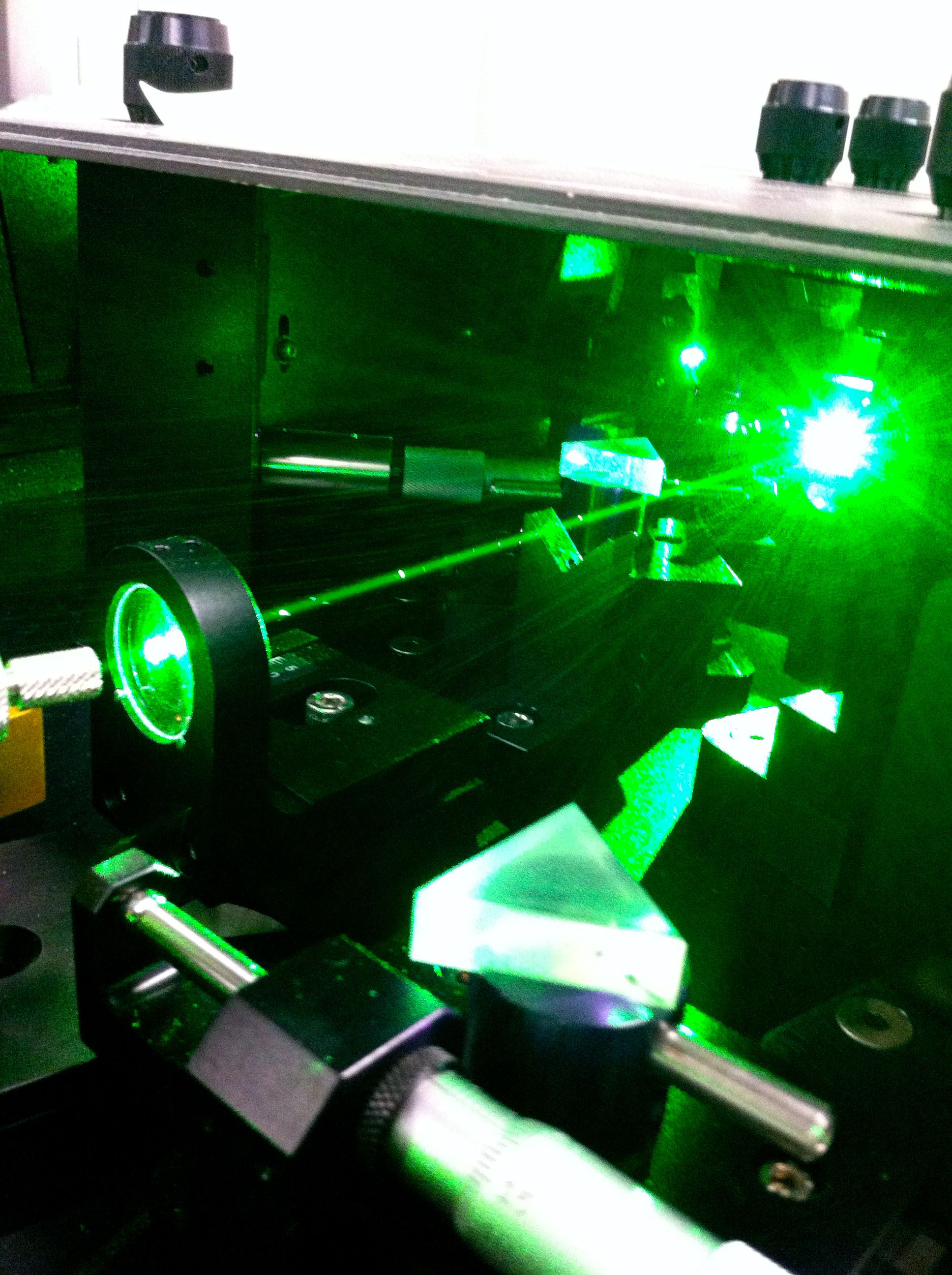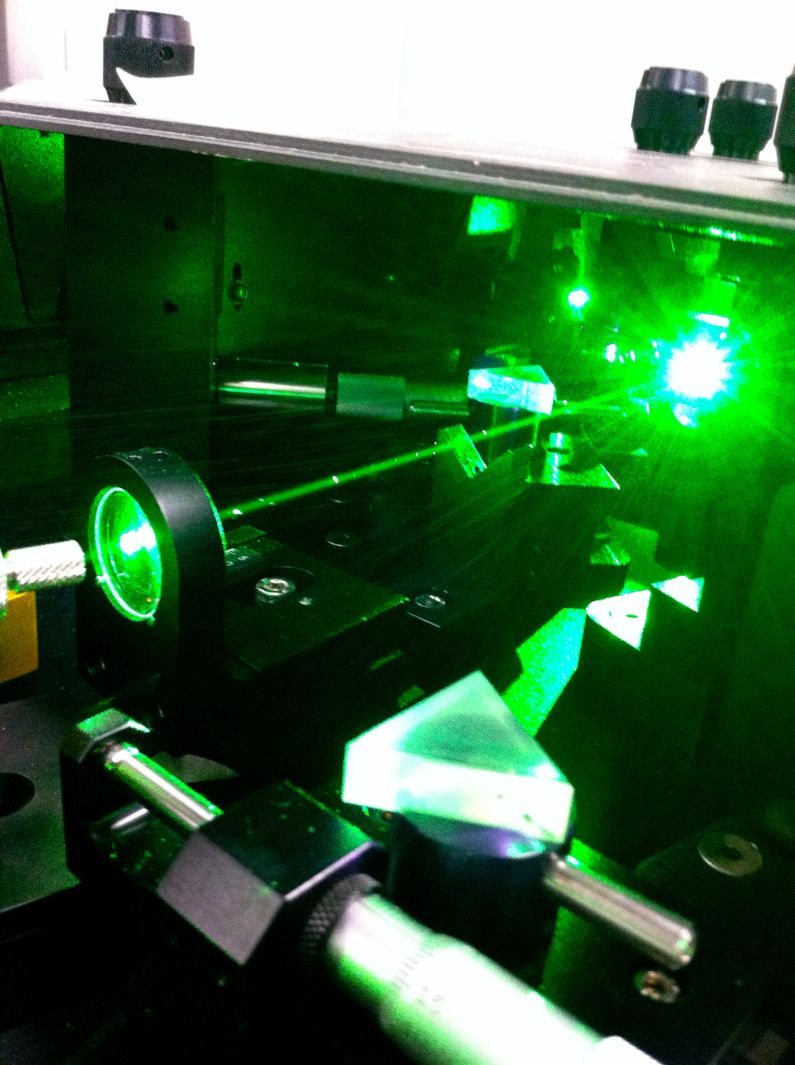(Untitled)

The view inside one of our lab’s titanium sapphire infrared lasers - if you see a view like this, you’re doing something wrong. Specifically, you’re not wearing laser goggles around a 10W laser source (bad), and placing your eyeballs at beam height (very bad, yet done almost instinctively by laser rookies). For this photo, my cell phone bravely went where my eyes dared not go, as I lowered it into danger for this shot.
Although the cavity is filled with the laser’s 830nm infrared light, the iPhone 4’s infrared filters seem to be good enough that it’s not picked up on the camera sensor (which is infrared-sensitive). Instead, what shows up is all the bright green light from another laser that powers the infrared laser. The green laser’s a diode laser and can be powered by electricity, but the titanium sapphire laser (a Coherent Mira 900, for those interested) has to be powered by another laser, a 10W beam focused down on a tiny crystal. The titanium sapphire beam, in turn, powers a third laser, an optical parametric oscillator (OPO) that emits light even deeper into the infrared range. The OPO’s major advantage is that its light is tunable over a huge range of infrared wavelengths - if we could see infrared light, we’d see the OPO beam changing through a rainbow of colors.
Usually the lasers are covered by boxes for safety, so stray light from the laser cavity doesn’t end up in eyeballs. We had the lasers open yesterday for a service call from Coherent’s laser technicians - the OPO laser wasn’t working. Fortunately, the problem turned out to be a simple plumbing issue in the chilling lines. Back to science again!


